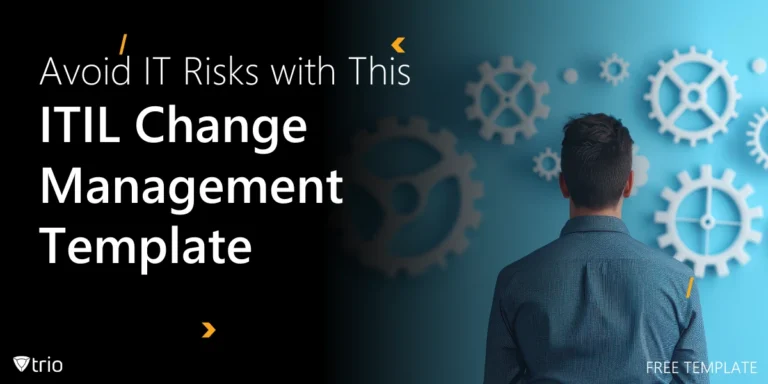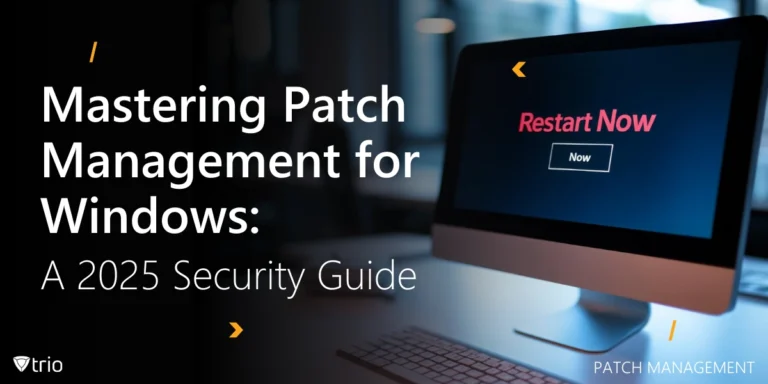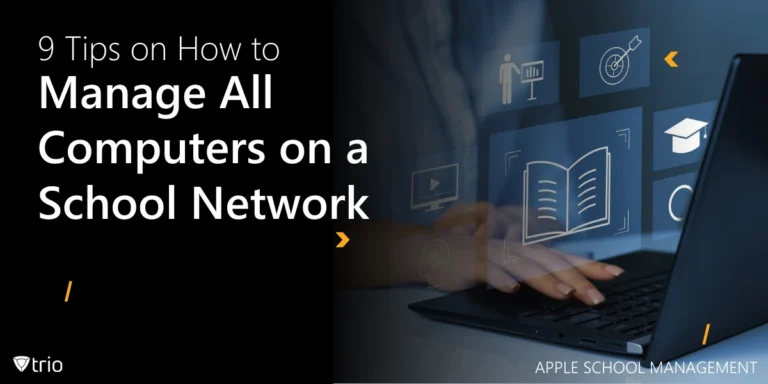Understanding the significance of a seamless transition for the email accounts of departing employees is crucial for safeguarding your business’s integrity and continuity. Terminated employee email policies are not merely a technical routine but a strategic step to prevent potential risks and ensure IT compliance. It underscores the need for a meticulous approach to managing email redirection for terminated employees, ensuring that critical communications are preserved and confidentiality is maintained.
The Risk Factor
Neglecting the proper management of terminated employees’ email accounts can lead to data breaches, loss of sensitive information, and unauthorized access, potentially causing significant harm to your company’s reputation and financial health. The balance between accessibility and security becomes a pivotal aspect of this transition. Instituting a clear policy on email handling post-termination is not just a matter of IT hygiene but a critical component of your business’s risk management strategy.
The objective here is straightforward: to arm you with actionable insights and practical guidance for navigating the complexities of email account management for terminated employees. This is not about adhering to a rigid set of instructions but understanding the nuances that can make a big difference in protecting your company’s interests and maintaining a smooth operational flow.
Implementing these strategies effectively can minimize risks, ensure compliance, and maintain the trust of your clients and stakeholders. As part of our commitment to providing comprehensive mobile device management (MDM) solutions, we understand the importance of managing every aspect of digital transitions, including email account management for those no longer with the company.
Understanding the Basics of Terminated Employee Email Policy
A terminated employee email policy outlines how an organization manages the email accounts of employees who have been terminated or have resigned. It encompasses steps to secure data and ensure continuity of operations, including legal compliance, protecting against unauthorized access, and maintaining professional relationships.
Having a solid policy in place is crucial for several reasons. Legally, it helps organizations comply with data protection laws and avoid penalties for mishandling personal information. From a security perspective, it prevents potential data breaches by ensuring terminated employees can’t access sensitive information. Professionally, it helps in maintaining relationships by ensuring that communication is redirected appropriately after an employee leaves.
Without a proper policy, companies face several risks. Former employees could retain access to sensitive company information, posing a threat of data theft or unauthorized sharing. There’s also a risk of legal repercussions if personal data is not handled according to data protection regulations. Additionally, a lack of clear communication can lead to confusion both internally and externally, potentially harming the company’s reputation and client relationships.
Implementing measures such as remote wipe for mobile devices and ensuring terminated employee deleted emails are handled according to policy are essential steps. These actions help safeguard sensitive information and ensure that the organization’s and its clients’ data remain secure. A comprehensive policy includes disabling access to company accounts, revoking permissions, and managing device and email account handovers efficiently.
Legal Considerations and Compliance
Ensuring email compliance within the framework of terminated employee policies requires a proactive approach. Navigating the complex landscape of legal considerations surrounding terminated employee email policies is crucial for organizations. These policies intersect with various privacy laws and data protection regulations, necessitating a careful balance between company security and employee rights.

Legal Landscape Unpacked
The legal environment for handling terminated employee emails involves adhering to federal laws such as the Sarbanes-Oxley Act, Gramm-Leach-Bliley Act, and HIPAA, among others. These laws dictate stringent record retention requirements and impose heavy penalties for non-compliance, including fines and imprisonment. Compliance with these regulations ensures that an organization’s email management practices are legally sound and protect against unauthorized access to sensitive information.
Navigating Legal Repercussions
Mismanagement of terminated employee emails can lead to significant legal repercussions, including breaches of privacy and wrongful termination lawsuits. For example, wrongful termination of an at-will employee could occur if the dismissal violates implied contracts, public policy, discrimination laws, or is in retaliation for whistleblowing. These scenarios underscore the importance of a comprehensive email policy that respects both legal standards and the rights of employees.
Staying on the Right Side of Compliance
To stay compliant while managing terminated employee emails, organizations should develop clear, documented policies that align with both internal business needs and external legal requirements. Regular updates to the policy in response to changes in law, technology, and organizational structure are necessary to remain in compliance. Moreover, implementing practices such as litigation holds can protect organizations during legal proceedings by ensuring relevant emails are retained and not prematurely deleted.
Technical Aspects of Managing Terminated Employee Emails
Securing access to a terminated employee’s email account involves several technical measures. Initially, changing the password and revoking access to the work email after termination are critical steps to prevent unauthorized access. This ensures that the former employee cannot access their email to retrieve or manipulate sensitive information, use it to disseminate malicious content, or steal customers.
Archiving or deleting emails should be done considering data retention policies and regulations that may vary depending on the industry and geographical location. It’s essential not to hastily delete a terminated employee’s emails as they could contain business-critical information. Instead, finding a centralized location for long-term storage of these emails is advisable, utilizing email archiving solutions that offer advanced security features like encryption and custom user permissions.
Mobile Device Management (MDM) solutions play a significant role in automating and securing the process of managing terminated employee emails. MDM can facilitate the remote wiping of company data from personal devices, enforce data retention policies, and automate the revocation of access to company resources. These solutions offer a streamlined approach to ensuring that all aspects of email and data security are addressed when an employee leaves the organization.
When considering automatic replies for terminated employees, setting up an autoresponder message that the employee is no longer with the company and providing alternative contact information is a common practice. This message helps in maintaining professional communication with external contacts who may not be aware of the employee’s departure.
Identity management plays a crucial role in this entire process, ensuring that only authorized users have access to sensitive information and systems. Implementing strong identity and access management policies helps safeguard against potential security breaches and ensures compliance with legal requirements.

Best Practices for a Smooth Transition
For a smooth transition following an employee’s termination, communication and clear procedures are key to maintaining a positive work environment and ensuring business continuity.
Open and Respectful Communication
Firstly, when an employee is terminated, it’s essential to plan what to say ahead of time. Be direct and provide a brief explanation for the decision. It’s crucial to schedule the termination meeting appropriately, aiming for a balance between giving the employee some notice and not causing undue stress or confusion within the workplace. Avoid making the conversation personal; focus on specific violations or reasons for termination, and refrain from airing grievances.
Seamless Handover Process
For the handover process, restrict access to the terminated employee’s mailbox but don’t delete everything immediately. The best approach includes archiving emails and possibly forwarding important communications to the appropriate parties or departments to ensure no critical information is lost and that client and vendor communications continue uninterrupted.
Setting Up Auto-Responders
Setting up an autoresponder for the terminated employee’s email account is a common practice. This helps in avoiding missed important communications. An appropriate message would inform senders that the employee is no longer with the company and direct them to the new point of contact. For example, “The person you are trying to reach is no longer with our company. For all inquiries, please contact [New Contact Information].” Remember, keeping an active mailbox incurs costs, so it’s vital to consider how long the account should remain open before archiving or deletion.
Implementing these practices helps tackle the challenges of BYOD policies by ensuring that all company data on personal devices is handled correctly upon an employee’s departure. Proper identity management and clear communication are crucial for navigating BYOD challenges and protecting company data.
Final Insights
Throughout this blog, we’ve explored the critical aspects of a terminated employee email policy, highlighting the importance of secure access management, data retention compliance, and the role of MDM solutions in ensuring seamless transitions. The significance of clear communication and proper handover processes cannot be overstated, ensuring business continuity and protecting sensitive information. We encourage organizations to reassess their current policies and consider the benefits of integrating MDM solutions like Trio to streamline these processes efficiently. For those interested in seeing Trio in action, we invite you to try a free demo. Your feedback and inquiries are always welcome; connect with us for more information or assistance in safeguarding your company’s digital assets and maintaining professional standards in employee transitions.
Get Ahead of the Curve
Every organization today needs a solution to automate time-consuming tasks and strengthen security.
Without the right tools, manual processes drain resources and leave gaps in protection. Trio MDM is designed to solve this problem, automating key tasks, boosting security, and ensuring compliance with ease.
Don't let inefficiencies hold you back. Learn how Trio MDM can revolutionize your IT operations or request a free trial today!




